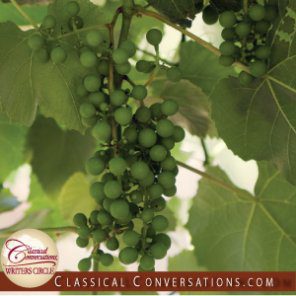Revisiting Some Archived Articles that Have Not Been Lost, but May Have Been Forgotten and Are Worth a Fresh Read
Original Post Date: July 26, 2012
When visitors enter the tasting room of the small Yadkin Valley winery where I have worked for the past three years, it is my goal to make their experience both pleasant and memorable. Whenever possible, I engage them in conversation. We chat about the weather, their travel plans, and the explosive growth of the wine industry in North Carolina over the past ten years.
Sometimes the conversation turns to me. Who am I? How did I find myself in this position? Am I trained as a sommelier? “Well, no,” I tell them. “By education, I am a writer and a scholar of English literature.” They nod politely but appear confused, so I point to the descriptions of the wines they are tasting—subtle cigar box—and crack a joke: “The former English majors of the world have to do something, right?” We share a laugh.
Then I become serious for a moment. One of the things I love about working at a winery, I tell them, is the perfect marriage of art and science represented there.
Making good wine is all about science. The vineyard manager is a student of soil types, elevation, water, and weather. He is a gardener: pruning to maximize airflow and direct the vine’s nutrients into quality fruit rather than excess foliage. Harvest takes place in a tenuous middle ground between optimal Brix (sugar level) and the inclement weather of hurricane season. Then, the winemaker must be a chemist, wielding malolactic fermentation, reverse osmosis, and pH testing.
Making good wine is all about science, but all the science of viticulture and oenology is wasted unless it is accompanied by art. It is no accident that wine inspires poetry. From the rising blush of color that caresses the grapes as they go through véraison, to the subtle aromas and textures that incite curiosity in the nose and pull moisture from the tongue, to the perfect ruby blend of Cabernet, Merlot, and Petit Verdot, winemaking is all about aesthetic judgment.
Art and science are not in competition, but in collaboration—that is what I love about working at a winery. It affirms for me that I can be a literature scholar who takes delight in the structure and order of algebra and the elegant simplicity of a production-possibility curve in economics. What a crazy idea!
Most people would classify me as a “word” person: creative, literary, verbal rather than numerical. Yet on standardized tests, I always scored as high or higher in mathematics as in verbal skills. I struggled to choose a major in college, feeling that I must decide between the logical, systematic side of my personality and the imaginative, artistic side.
Too often, our culture maintains an emphatic divide between right- and left-brained people, forgetting, perhaps, that no matter how dominant one form of cognitive function may be, most of us do possess both left and right hemispheres of the brain. We are wired for a full spectrum of ways to encounter, make sense of, and enjoy the world.
A friend recently shared with me a passage from a book called Supper of the Lamb: A Culinary Reflection by Robert Farrar Capon (1967). Capon devotes an entire chapter to reflections on the nature of wine and its role in a meal. Appropriately, he opens with a poem, “Water in Excelsis.” To me, this exemplifies the beauty and harmony that result when we cut away the artificial boundaries between art and science, and allow ourselves to be whole people—imperfect, certainly, but striving toward wholeness nonetheless.
“Water in Excelsis”
Water above the firmament:
winter rain descending; the roots of vitis vivifera clutching earth.
Spring warmth:
water drawn through vinestock, stem, and leaf; tendril, flower, fruit.
Summer heat:
sun fierce upon the hills; in the grape now, water, glucose, fructose, tannin, acid; all beneath the thin firmament on which the Spirit’s brooding leaves behind a bloom of yeast; Saccharomyces ellipsoideus: the thumbprint of the Lord and Giver of life.
Then autumn:
basket, press, vat; sugar and yeast wantoning; earth’s old September love revived: C6H12O6=2C2H5OH+2CO2; fermentation; the warm must, its jaunty cap set drunkenly, rejoices in the pleasure of good company.
Here sing and brawl now
alcohol, carbonic acid gas, acetic acid, higher alcohols, succinic acid, glycerol, and, chief among them,
Water come of age
in the vast pots of this old Cana, where the Word, in silence, orders up new wine.
Finally:
racking off, barreling, clearing, bottling; the long wait—for esters: alcohol and acid reconciled, wine bodied forth to roundness and a nose; for oxidation: tannin and alcohol softened, corners smoothed by the Spirit’s thumb, purple shaded to brown
Until
(in Heaven it is alwaies Autumne) earth’s last best gift is brought to sere and velvet elegance,
To Wine indeed
To Water in excelsis.
The phrase “…in Heaven it is alwaies Autumne…” is a quote from a sermon by British poet, John Donne, written in 1640. Read the text of the sermon www.msgr.ca/msgr-3/john_donne_sermon_10.htm.




